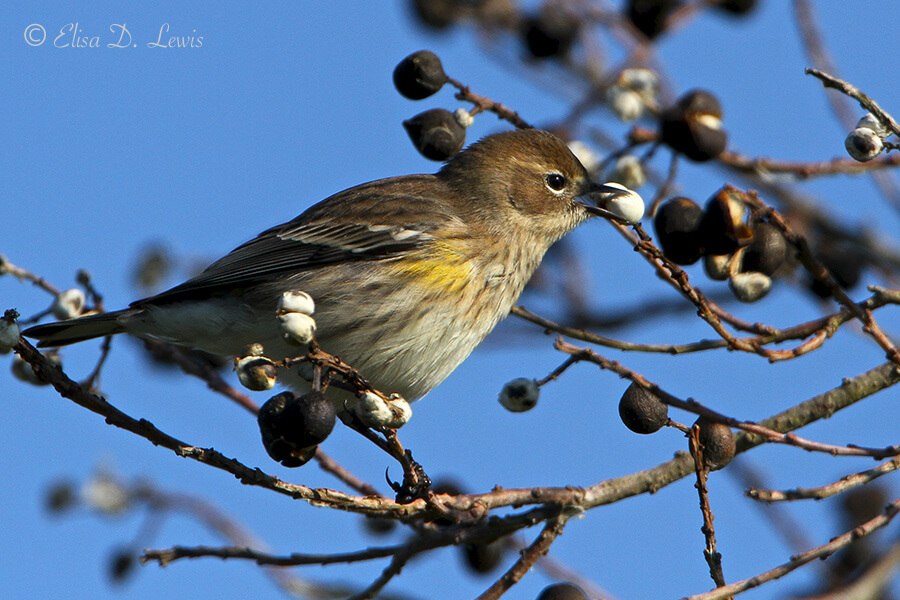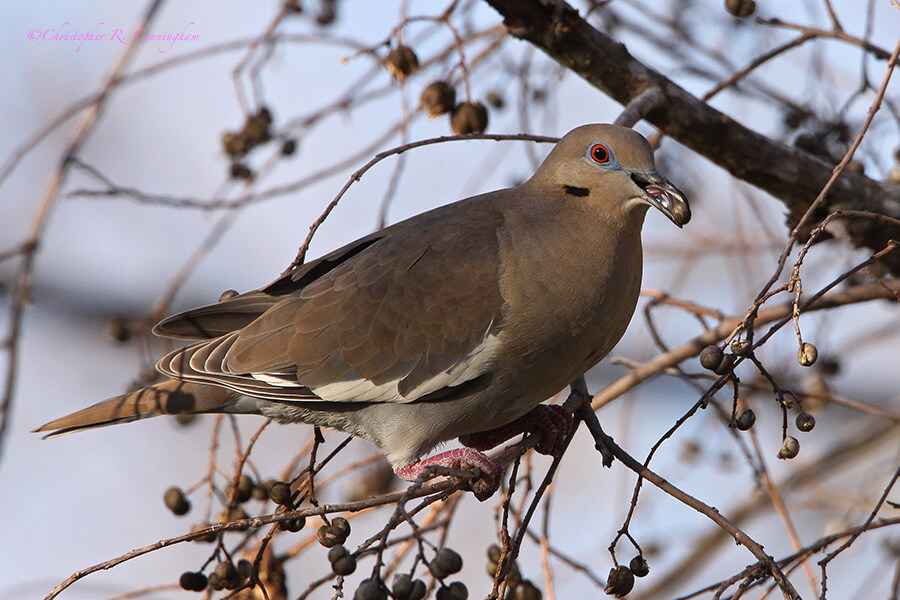
The Chinese tallow tree (Triadica sebifera) is a foreign invasive native to China and Japan. However, it’s not uncommon to see birds like House Finches and White-winged Doves eating Chinese tallow seeds, or to see Yellow-rumped and Orange-crowned warblers hunting insects and spiders among tallow leaves.
Chinese tallow fruits are three-lobed and contain three oily, wax-covered seeds. Recently Elisa caught Myrtle Warblers scraping wax from tallow seeds. Some birds even appeared to be squabbling over access to the choicest seeds.
Tallow seeds themselves are biochemically distinct from the wax coating, so birds consuming just tallow versus whole seeds will ingest different suites of compounds and receive different nutritional benefits. Chinese tallow seeds are more oil-rich than many seeds cultivated for human consumption such as soybeans, peanuts, and sunflower seeds, and show promise as the basis for a biodiesel industry in the U.S.
Many native plants lovers and land managers, however, consider the Chinese tallow a pestilence because of its hardy and invasive nature. Alarmingly, Chinese tallow trees now constitute 23% of all trees in the Houston area! Unfortunately Chinese tallows are highly invasive and here to stay. But on the up side, at a time of the year when arthropod abundance is at a low point, the Chinese tallow provides a vast nutritional resource for any birds capable of consuming its seeds.

Irony regards every simple truth as a challenge.—Mason Cooley
©2013 Elisa D. Lewis and Christopher R. Cunningham. All rights reserved. No text or images may be duplicated or distributed without permission.